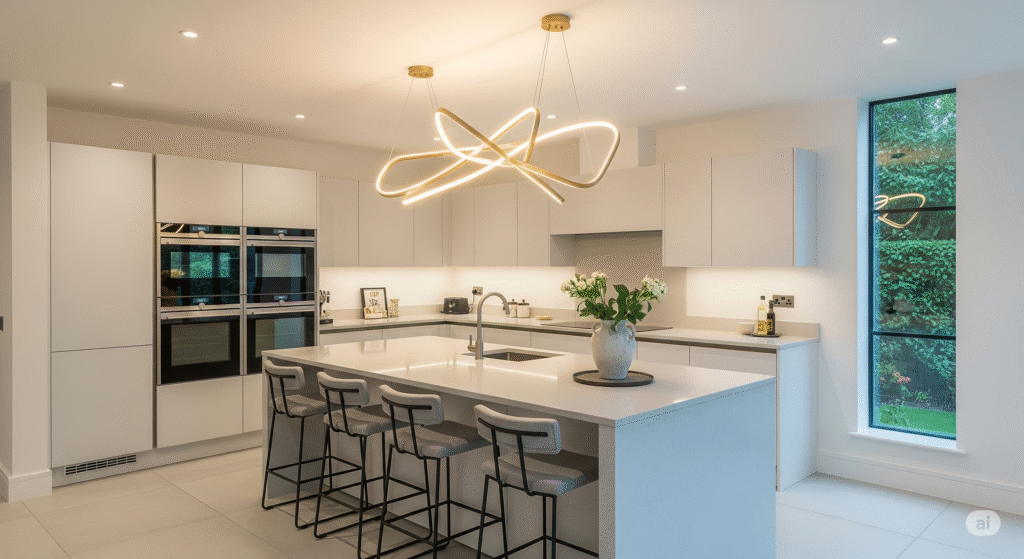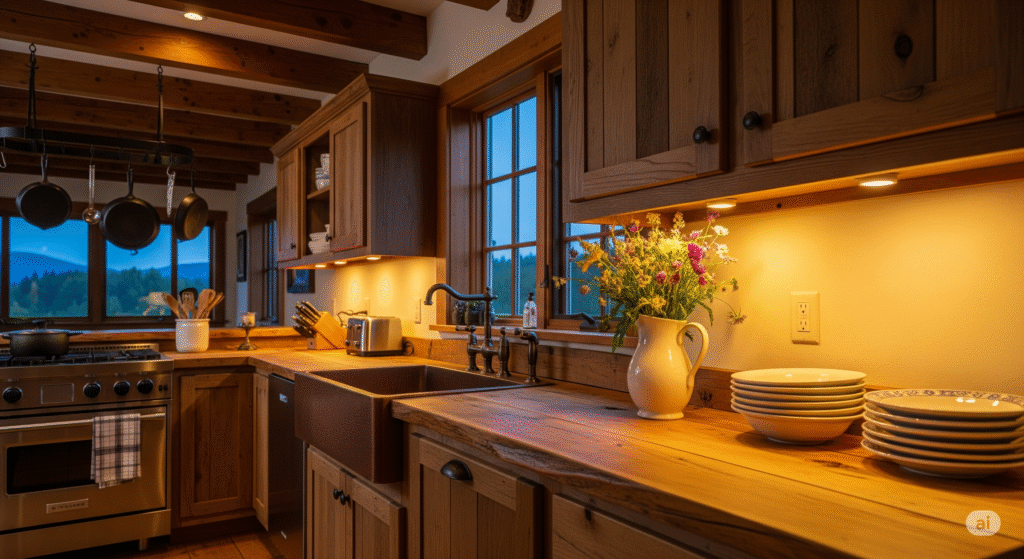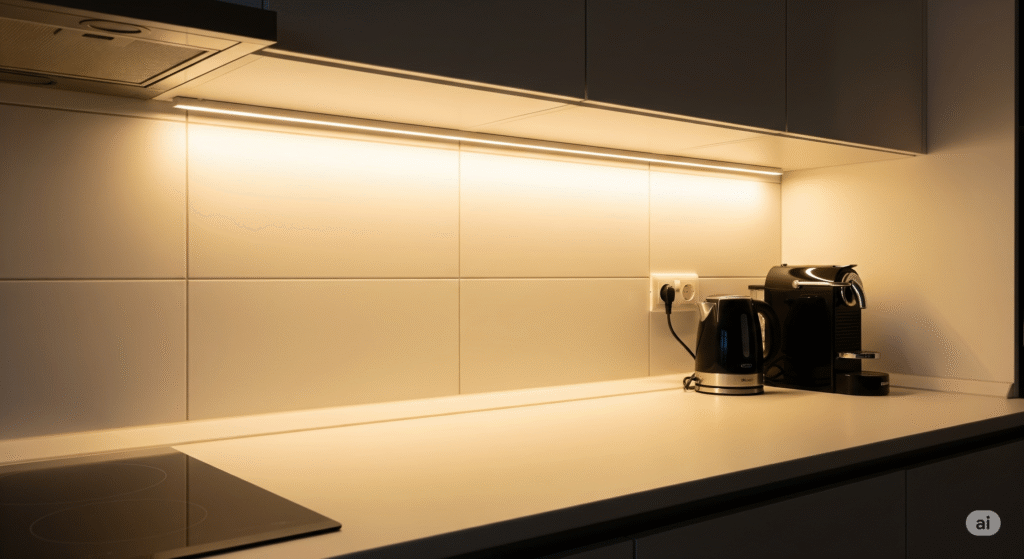Why Layered Lighting in Your Kitchen Matters in 2025
The kitchen is more than just a cooking area—it’s the heart of the home, a space for conversations, quick breakfasts, and late-night snacks. In 2025, layered lighting has emerged as one of the top interior design trends, bringing together style, energy efficiency, and functionality.
Whether you have a sleek modern kitchen or a cozy farmhouse-style space, the right mix of lights can transform how it looks and feels. This guide will walk you through what layered lighting is, why it matters now more than ever, and how you can apply it to your kitchen.
What is Layered Lighting?
Layered lighting is the art of combining three main types of lighting—ambient, task, and accent—so your kitchen looks beautiful and works perfectly at any time of day.
- Ambient Lighting – The overall illumination of the space. Think ceiling fixtures, recessed lights, or LED panels.
- Task Lighting – Bright, focused lighting for specific work areas like countertops, sinks, or stovetops.
- Accent Lighting – Decorative or dramatic lighting that highlights certain areas, like under-cabinet LED strips or pendant lights over the island.
When done right, these layers blend seamlessly, ensuring you have both practicality and aesthetic appeal.
Why Layered Lighting is a Big Deal in 2025
In 2025, layered lighting isn’t just about making your kitchen look good—it’s about creating a smarter, more efficient, and more comfortable home.
1. It Matches the Multi-Functionality of Modern Kitchens
Today’s kitchens are open spaces where people cook, eat, work, and socialize. Layered lighting lets you adjust the mood—bright for chopping vegetables, softer for dinner with friends.
2. Energy Efficiency with Smart Controls
With smart bulbs, motion sensors, and dimmers, you can control brightness and color temperature, saving on electricity while creating different lighting “scenes” with a tap on your phone.
3. Supports Wellness and Comfort
Light affects mood and productivity. Warmer tones in the evening help you relax, while cooler tones during the day keep you energized.
4. Enhances Home Value
Well-designed lighting is a major selling point. In 2025, potential buyers expect kitchens to have thoughtful, layered lighting setups.
How to Apply Layered Lighting in Your Kitchen
Here’s how you can create a well-lit, inviting, and functional kitchen in 2025.
1. Start with Ambient Lighting
- Recessed ceiling lights for even coverage.
- LED panels or modern chandeliers for style.
- Choose warm-white light for a cozy, inviting feel.

2. Add Task Lighting Where You Work Most
- Under-cabinet LED strips for cutting and prepping areas.
- Pendant lights over kitchen islands.
- Adjustable spotlights over the stove and sink.
3. Use Accent Lighting for Style
- Install lights inside glass cabinets to display dishes.
- Add toe-kick lighting under counters for a floating effect.
- Use color-changing LEDs for a playful, modern touch.

4. Integrate Smart Lighting Technology
- Use voice control via Alexa, Google Home, or Apple HomeKit.
- Set timers for lights to turn on/off automatically.
- Experiment with circadian lighting to mimic natural daylight.
5. Balance the Color Temperature
- 3000K–3500K for warm, inviting spaces.
- 4000K+ for crisp, clean task lighting.
Smart Home Lighting: The Ultimate Guide to Modern, Energy-Efficient Living in 2025
Top Lighting Trends for Kitchens in 2025

- Slim LED Panels – Sleek, energy-efficient, and perfect for minimalistic kitchens.
- Matte Black Fixtures – Adds elegance and contrast.
- Brass & Gold Finishes – Warm metallics are making a comeback.
- Statement Pendant Clusters – Multiple pendants for a bold design touch.
- Sustainable Lighting Materials – Bamboo, recycled glass, and eco-friendly LEDs.
Mistakes to Avoid with Kitchen Lighting
- Over-relying on one light source – Leads to shadows and uneven brightness.
- Ignoring dimmers – Limits flexibility for mood and energy savings.
- Choosing the wrong color temperature – Can make your kitchen feel too cold or too yellow.
FAQs About Layered Kitchen Lighting
Q1: Is layered lighting expensive to install?
Not necessarily. You can start small with affordable under-cabinet LED strips and gradually add other layers.
Q2: Can I install layered lighting myself?
Basic setups like LED strips are DIY-friendly, but complex wiring should be handled by an electrician.
Q3: How many layers do I need for a small kitchen?
Even in small spaces, having at least ambient + task lighting makes a big difference.
